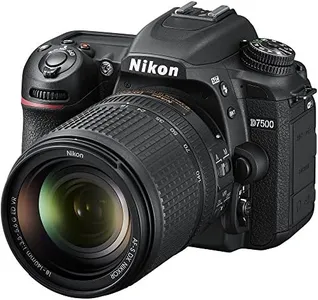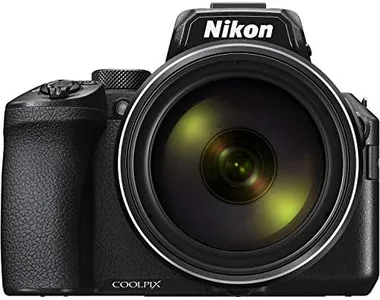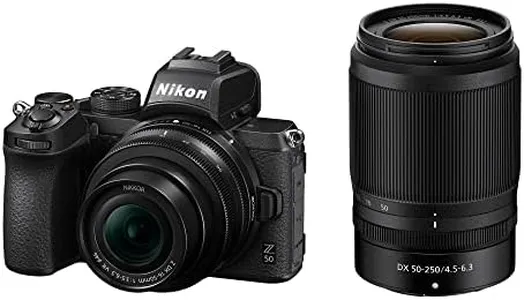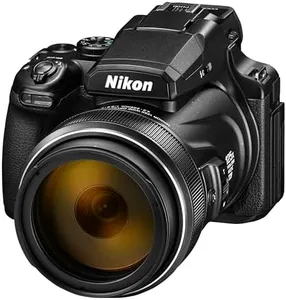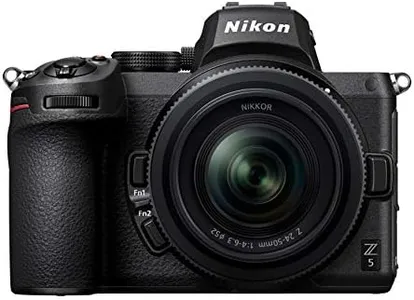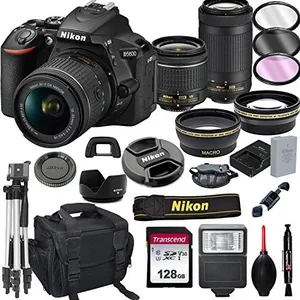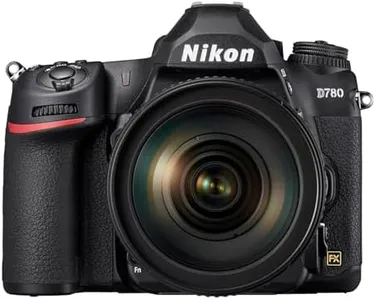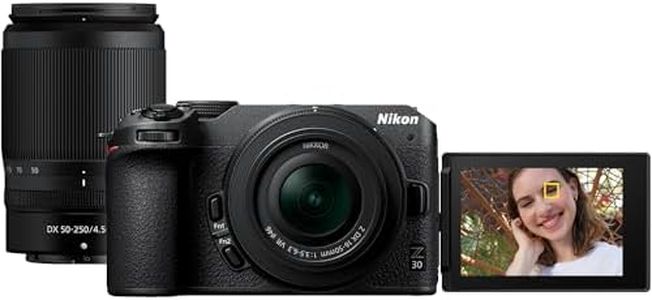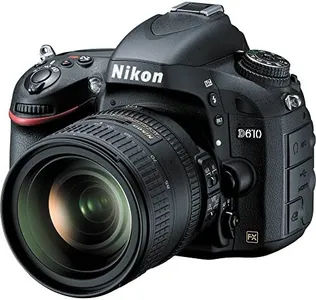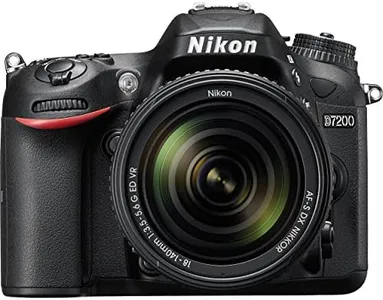10 Best Nikon Camera For Beginners 2025 in the United States
Our technology thoroughly searches through the online shopping world, reviewing hundreds of sites. We then process and analyze this information, updating in real-time to bring you the latest top-rated products. This way, you always get the best and most current options available.

Our Top Picks
Winner
Nikon D7500 20.9MP DSLR Camera with AF-S DX NIKKOR 18-140mm f/3.5-5.6G ED VR Lens, Black
Most important from
1560 reviews
The Nikon D7500 is a solid choice for beginners looking to dive into DSLR photography. With its 20.9MP sensor, it delivers impressive image quality, making it suitable for capturing a wide range of scenes. Its ISO range of 100-51,200 allows for good performance in low light, which is particularly beneficial for those starting out who might encounter various lighting conditions. The 51-point autofocus system, including 15 cross-type sensors, ensures accurate focusing, and the ability to shoot continuously at 8 frames per second is great for capturing fast-moving subjects.
One of its standout features is the 3.2-inch tilting touchscreen LCD, which enhances usability for those unfamiliar with traditional camera controls. The capability to shoot 4K video alongside 1080p HD options adds versatility for users interested in videography as well. The camera is also built with Wi-Fi and Bluetooth connectivity, making it easy to transfer images to other devices.
However, the D7500 is not without its drawbacks. It may feel a bit bulky for some beginners who prefer a more compact option, making portability an issue for travel or casual photography. The absence of a fully articulating screen could limit creative shooting angles for vlogging or low-angle shots. Battery life is decent but not exceptional, so users may want to keep a spare battery handy for extended shoots. Additionally, while the camera offers many advanced features, beginners may find the plethora of settings a bit overwhelming at first, requiring some time to learn and adjust.
Most important from
1560 reviews
NIkon COOLPIX P950 Superzoom Digital Camera | 83x Optical Zoom with Image Stabilization 16 MP 4K Ultra HD Video Wi-Fi Connectivity RAW Format and Rotating LCD Screen (Black)
Most important from
423 reviews
The Nikon COOLPIX P950 is a solid choice for beginner photographers looking for a versatile camera. With a 16 MP sensor and an impressive 83x optical zoom, it allows you to capture detailed shots from a great distance. The camera's built-in image stabilization helps reduce blur, ensuring your photos remain sharp even when zoomed in. It also supports RAW format, which is beneficial for those who want to edit their photos extensively.
The camera can shoot 4K UHD videos, making it suitable for both still photography and video recording. Its rotating LCD screen is handy for shooting from various angles, and built-in modes like Bird and Moon make it easier for beginners to capture specific types of scenes effectively. However, the camera uses a 1/2.3-inch sensor, which is smaller than those found in more advanced models, potentially limiting image quality in low-light conditions.
The autofocus system, which employs contrast detection with 399 points, might not be as fast or accurate as phase-detection systems. Battery life is also average, with approximately 290 shots per charge, so you may need to carry a spare battery for longer outings. The build quality is sturdy, though the camera is relatively heavy at 1000 grams, which might be cumbersome for some users. Despite these drawbacks, the COOLPIX P950 offers a blend of ease of use, feature-rich performance, and excellent zoom capabilities, making it a compelling option for beginners venturing into photography.
Most important from
423 reviews
Nikon Z 50 with Two Lenses | Compact mirrorless stills/video camera with wide-angle and telephoto zoom lenses | Nikon USA Model
Most important from
668 reviews
The Nikon Z 50 is a compact and lightweight mirrorless camera designed for beginners in photography and vlogging. It features a 20.9 MP DX-format sensor which promises good image quality and decent performance in low light conditions. This is enhanced by its wide lens mount, allowing for more light to hit the sensor. The camera supports 4K UHD video, making it a solid choice for those interested in videography as well.
The inclusion of a 'selfie' flip-down touch LCD screen simplifies self-portraits and vlogging, making it very user-friendly for those new to the craft. Built-in Wi-Fi and Bluetooth provide easy connectivity to smartphones, streamlining the process of sharing images and videos on social media or with friends and family. It also comes with two lenses, a wide-angle and a telephoto zoom, giving beginners flexibility in various shooting scenarios.
The camera is compatible with the Nikkor Z lenses and can also be used with older F Mount NIKKOR lenses via an FTZ Mount Adapter, although this adapter is sold separately which might be an additional cost. In terms of drawbacks, while the camera is designed to be easy to use, the advanced settings and features might initially overwhelm absolute beginners. Additionally, its battery life is adequate but not exceptional, so carrying a spare battery could be necessary for longer shooting sessions. The build quality is robust and durable, ensuring the camera can withstand regular use. To sum up, the Nikon Z 50 offers a good balance of quality, ease of use, and versatility, making it a strong option for beginners looking to explore both photography and videography.
